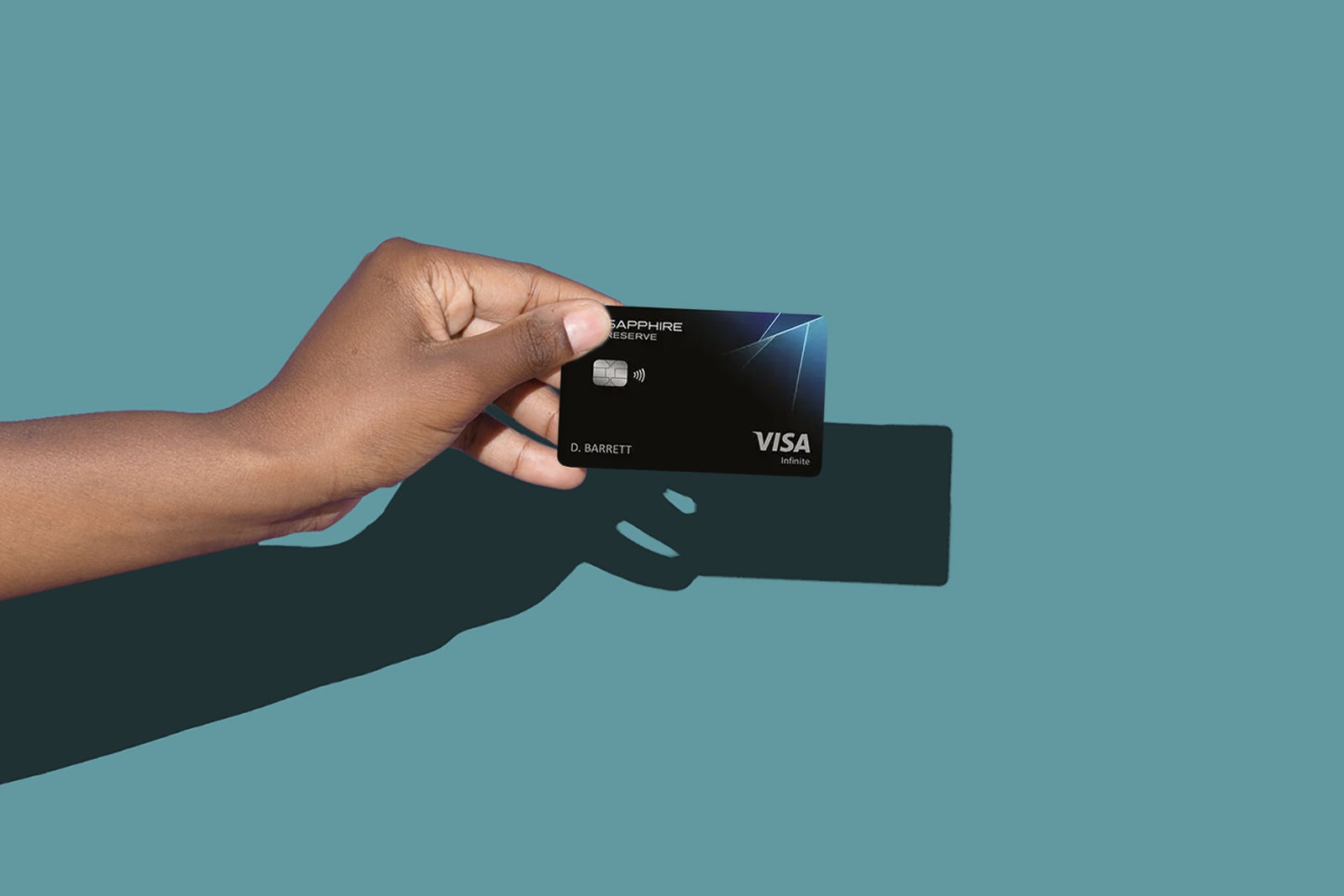The Chase Sapphire Reserve® is one of the best travel credit cards in the points and miles world, constantly ranking as a top premium card.
Several perks of the card stand out as its strong suits include a $300 annual travel credit, earning valuable Chase Ultimate Rewards points, excellent travel insurance and a lofty sign-up bonus of 75,000 points after meeting the minimum $4,000 spending requirement in three months from account opening; per TPG valuations, this offer is worth $1,538.
However, the Chase Sapphire Reserve also charges a $550 annual fee. Is it worth that price tag after you’ve used the sign-up bonus? Let’s examine how you can maximize this card’s benefits to ensure you’re earning the most points — and saving money while you’re at it.
Overview of the Chase Sapphire Reserve benefits
Below are the notable benefits of the Sapphire Reserve, including its earning rates:
This card’s value extends far beyond the sign-up bonus. If you travel even a few times per year, the Chase Sapphire Reserve is likely worthwhile for you.
Related: Chase Sapphire Reserve review
Strategies for maximizing the Chase Sapphire Reserve
The Sapphire Reserve currently offers 75,000 bonus points after spending $4,000 on purchases within the first three months of account opening. TPG values that bonus at $1,538 worth of travel, though it’s certainly possible to receive more value if you’re acquainted with Chase Ultimate Rewards sweet spots.
Beyond the bonus, how can you rack up Chase Ultimate Rewards points with this card?

Daily Newsletter
Reward your inbox with the TPG Daily newsletter
Join over 700,000 readers for breaking news, in-depth guides and exclusive deals from TPG’s experts
Use your Chase Sapphire Reserve to pay for hotels via Chase Travel
Earning 10 Chase points per dollar is a stellar rate.
The Chase Sapphire Reserve accrues 10 points per dollar for hotels reserved through Chase Travel. Now, booking a hotel through Chase comes with pros and cons (as we’ll touch on later), but you can think of this earning rate as a 20% rebate, as TPG values Chase points at 2 cents each.
If you usually head to online travel agencies like Orbitz and Priceline when booking a hotel, you should love this particular benefit. That’s because Chase uses Expedia to reserve hotels, so you’ll be dealing with an ecosystem with which you’re familiar.
Use your Chase Sapphire Reserve to pay for rental cars
Again, you’ll earn 10 Chase points per dollar when renting cards through Chase Travel.
This earning rate works perfectly in tandem with the card’s already generous primary rental car insurance. The Chase Sapphire Reserve is one of the best credit cards for reserving rental cars, so it’s an obvious choice for renting cars, anyway. This 10 points per dollar earning rate just makes it that much more of a no-brainer.
When you book a rental car with this card and waive the rental agency’s in-house insurance, you’ll receive primary coverage against damage and theft. Not paying for insurance at the desk could save you at least $15 per day!
Use your Chase Sapphire Reserve to pay for airfare
The Chase Sapphire Reserve earns 5 points per dollar on airfare when booking through the Chase travel portal and 3 points per dollar when booking through an online travel agency or directly with the airline. Those are solid earning rates no matter which outlet you choose to book flights.
There are two additional reasons the Chase Sapphire Reserve is at the top of the list when it comes to booking airfare:
- Trip delay insurance: You are covered for up to $500 per ticket when your flight is delayed six hours or more or overnight.
- Baggage delay insurance: You and your immediate family are entitled to up to $100 per day for up to five days for necessary expenses like clothes, toiletries, etc. This benefit kicks in when your bags are delayed six hours or more.
Use your Chase Sapphire Reserve for dining
The Chase Sapphire Reserve earns 10 points per dollar on Chase Dining purchases with Ultimate Rewards and 3 points per dollar on worldwide dining. That’s a solid 6-20% back at restaurants, per TPG valuations. If you’re like us, you spend thousands per year on dining. It’s not difficult to rack up 10,000 points per year from dining alone — especially considering this 3 points per dollar bonus category includes delivery services like DoorDash.
This earning rate works well with the card’s promotional DoorDash benefits:
- Complimentary DashPass membership of (at least) one year when you enroll by Dec. 31, 2024 (free delivery on orders totaling more than $12).
Use your Chase Sapphire Reserve for $300 in travel each year
You won’t earn points for the first $300 you spend on travel each cardmember year. That sounds like a bad thing, but it’s not.
Chase reimburses up to $300 in travel purchases after your account anniversary. And because Chase has a broad definition of travel, your credit will automatically trigger for expenses like:
- Airfare
- Hotels
- Timeshares
- Car rentals
- Cruises
- Travel agencies
- Campgrounds
- Trains, buses, taxis and limousines
- Ferries
- Toll bridges
- Parking lots and garages
You’ll receive access to this credit as soon as you open the card. Factor this in with the $1,500 in bonus points you’ll receive (per TPG valuations), and you’re looking at a first-year value proposition of $1,800 from opening the Chase Sapphire Reserve. And as long as you spend $300 in travel each year, this credit effectively lowers the card’s $550 annual fee to $250.
When not to use the Chase Sapphire Reserve
There are some situations in which the Chase Sapphire Reserve doesn’t work in your favor.
Don’t use your Chase Sapphire Reserve to pay for non-bonus expenses
The Chase Sapphire Reserve earns 1 point per dollar on all expenses that don’t fall into a bonus category. There are plenty of cards that will better serve you for these purchases. To keep earning Chase Ultimate Rewards, pair the Sapphire Reserve with the Chase Freedom Unlimited®, which earns a flat 1.5% (1.5 points per dollar) on all purchases.
Don’t use your Chase Sapphire Reserve to pay for hotels if you’re pursuing elite status
Earning 10 points per dollar for hotels through the Chase travel portal is undoubtedly alluring — but it’s not for everyone. Because Expedia powers the Chase portal, you are effectively booking your hotel via a third party. That means:
- You won’t earn elite night credits
- You won’t earn hotel points
- If you have elite status, it (almost certainly) won’t be recognized
If you’re chasing elite status — or if you want to enjoy the status you’ve already earned — don’t book your hotel through Chase Travel. We suggest instead that you open a hotel credit card with your favorite hotel chain and book directly with the hotel.
Bottom line
The Chase Sapphire Reserve is worth the $550 annual fee to those who know how to wield it. Thanks to its top-of-the-line travel insurance, its ability to earn 10 Chase points per dollar on select purchases and its $300 annual travel credit, it’s a TPG staff and reader favorite. The card’s 75,000-point bonus isn’t anything to sneeze at, either.
Apply here: Chase Sapphire Reserve with a 75,000-point bonus after spending $4,000 in the first three months of opening a new account.




